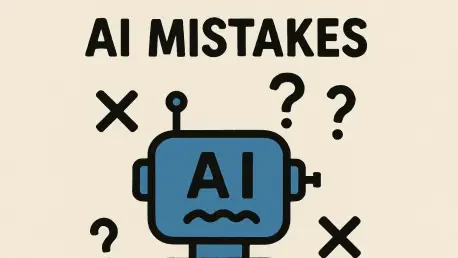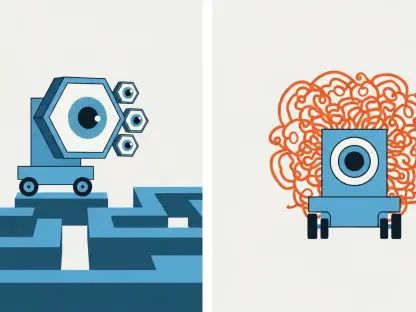Laurent Giraid is a prominent figure in the tech world, known for his extensive knowledge of Artificial Intelligence, particularly in machine learning and natural language processing. With a keen interest in the ethical dimensions of AI, Laurent’s insights make him a sought-after thought leader in the AI community. In this interview, he explores the intricacies of user responsibility in AI mishaps, the anthropomorphic marketing strategies companies use, and the ethics of using AI in writing and journalism.
Can you explain why you believe the user is to blame when AI fails?
The crux of the argument is user responsibility. When someone decides to use AI, they are effectively choosing a tool to achieve a specific result. This decision carries the obligation to understand the tool’s capabilities and limitations. Errors often arise when users abdicate this responsibility and allow the AI to perform tasks unsupervised. As such, when an AI fails, it’s more an indictment of user oversight than the machine’s capabilities.
How does the human-like language of AI chatbots contribute to misunderstandings about their capabilities?
AI chatbots create an illusion of understanding by mimicking human conversation, which can lead to overestimating their cognitive abilities. People might mistakenly believe these chatbots have genuine intelligence or emotional awareness simply because they can produce coherent texts. This anthropomorphic perception misleads users into thinking these systems can function autonomously without error.
What role do companies play in creating confusion about AI by marketing them as friends, lovers, pets, and therapists?
Companies exacerbate confusion by promoting AI as companions, which implies an emotional intelligence these systems don’t possess. Marketing campaigns often draw on human relationships to engage consumers, suggesting AI can emulate human empathy and understanding. This not only creates unrealistic expectations but also leads to user reliance on AI in ways it was not designed for.
Why do some AI researchers claim their AI and robots can “feel” and “think,” and how does this impact public perception?
Some researchers might claim their AI can feel or think as a form of aspirational storytelling to attract funding or media attention. However, these claims often blur the lines between reality and science fiction, sowing confusion. This misrepresentation can cause people to misjudge AI’s current capabilities, leading to inappropriate applications and negligence in oversight.
Could you provide examples where AI failure negatively impacted real-world situations?
One notable example involves a piece that used fictitious AI-generated book titles, leading to the publication of a bogus reading list by several newspapers. This oversight might have seemed minor, yet it highlighted the dangers of unsupervised AI in media. Additionally, in corporate scenarios like Air Canada’s chatbot misadventure, AI failure had direct legal and customer service repercussions, reminding us of the high stakes involved.
Why did Lena McDonald and other authors get caught using AI to mimic writing styles?
Lena McDonald’s case illustrates how tempting it is to leverage AI for creative processes, hoping to enhance or replicate specific writing styles. However, her reliance on AI-generated text without adequate editorial input exposed the work as derivative. This approach undermines authentic creativity and craftsmanship, leading to ethical and professional challenges.
What steps should authors take to avoid AI-related errors in their writing?
Authors should maintain a diligent editorial standard, treating AI as an assistive tool rather than an autonomous creator. This involves reviewing, editing, and fact-checking AI content as rigorously as they would any other source. Authors must self-regulate to ensure the integrity of the narrative and mitigate the risks of reliance on AI.
How did a “Summer Reading List for 2025” end up featuring fake books, and who was responsible for this mistake?
The incident with the fake reading list was a failure of human oversight. A creative process involving AI-generated content requires careful scrutiny, but in this case, the responsibility was overlooked, resulting in the dissemination of non-existent titles. It underscores the essential role of human editors in AI-assisted publishing.
In the case of the Air Canada chatbot blunder, why did the company claim the chatbot was a “separate legal entity,” and what was the outcome?
Air Canada’s claim was an attempt to disassociate liability from its technology mishap. By designating the chatbot as autonomous, they hoped to defray corporate responsibility for misinformation. However, the tribunal rejected this notion, affirming corporate accountability for technological decisions and usage.
Why do you think users are consistently to blame when errors occur in AI-generated content?
Users determine the input, context, and application of AI, thus they shape the outputs. The primary factor in AI misuse or errors is user misunderstanding or negligence rather than the technology itself. Users need to own the outcomes of their engagement with AI and ensure proper guidance and validation.
Can you talk about the potential risks involved when users let AI do their work unsupervised?
Unsupervised AI operation can perpetuate misinformation, propagate errors, and lead to unintended consequences. The lack of human verification creates opportunities for systemic inaccuracies, particularly in high-stakes sectors like healthcare and law, where precision is vital. Vigilance is crucial in mitigating such risks.
What is your stance on companies banning the use of AI tools entirely? Why might this be a mistake?
Banning AI does not address the underlying issue of user responsibility and may hinder innovation. Instead, companies should focus on educating and training users to leverage AI responsibly and effectively. This approach balances innovation with caution, helping integrate AI meaningfully while safeguarding against potential pitfalls.
How can users find a middle ground in effectively incorporating AI into their work while ensuring accuracy?
The key is to use AI as an augmentative partner rather than a replacement. Users must be proactive in checking AI outputs against established facts and logic. Emphasizing human oversight will amplify AI benefits while minimizing errors, striking a practical balance between automation and accountability.
In what ways does the frequent fabrication of information by AI, like OpenAI’s Whisper model, pose a threat in critical fields such as medicine?
In critical fields, even a minor fabrication can directly impact health and safety outcomes. Whisper’s tendency to fabricate information means that unchecked outputs could lead to erroneous diagnoses or medical decisions. Transparency in AI limitations and rigorous verification processes are necessary safeguards to prevent harm.
Could you elaborate on your statement that any AI use is “100% the user’s responsibility”?
AI is a tool—its value and accuracy are determined by the user’s ability to control and guide it. The user selects prompts, interprets results, and applies them contextually. Thus, any failure reflects improper use or oversight, reinforcing the notion that users are the ultimate arbiters of their AI transactions.
Why do you expect the irresponsible use of AI will continue to cause errors and problems in the future?
Given the current trajectory of rapid AI adoption, many users are lured by convenience without grasping AI’s intricacies or risks. This widespread misunderstanding fuels a cycle of misuse and error. Continuous education and structured guidelines are vital to realign user practices with AI’s ethical and functional frameworks.
How do you interpret HAL 9000’s quote, “It can only be attributable to human error,” in the context of modern AI usage?
HAL 9000’s assertion encapsulates the essence of AI responsibility. No matter how advanced AI becomes, it operates within parameters set by humans. Errors often reflect not just technological malfunctions but our misconceptions or misapplications, asserting that human oversight will always be central to AI reliability.
What advice would you give to individuals and companies to mitigate AI-related errors effectively?
Prioritize understanding over automation—never implement AI without knowing both its potential and its limitations. Encourage a culture of accountability where each AI interaction is carefully curated and meticulously checked. Developing a robust AI literacy, paired with comprehensive oversight mechanisms, is key to minimizing errors and maximizing benefits.









